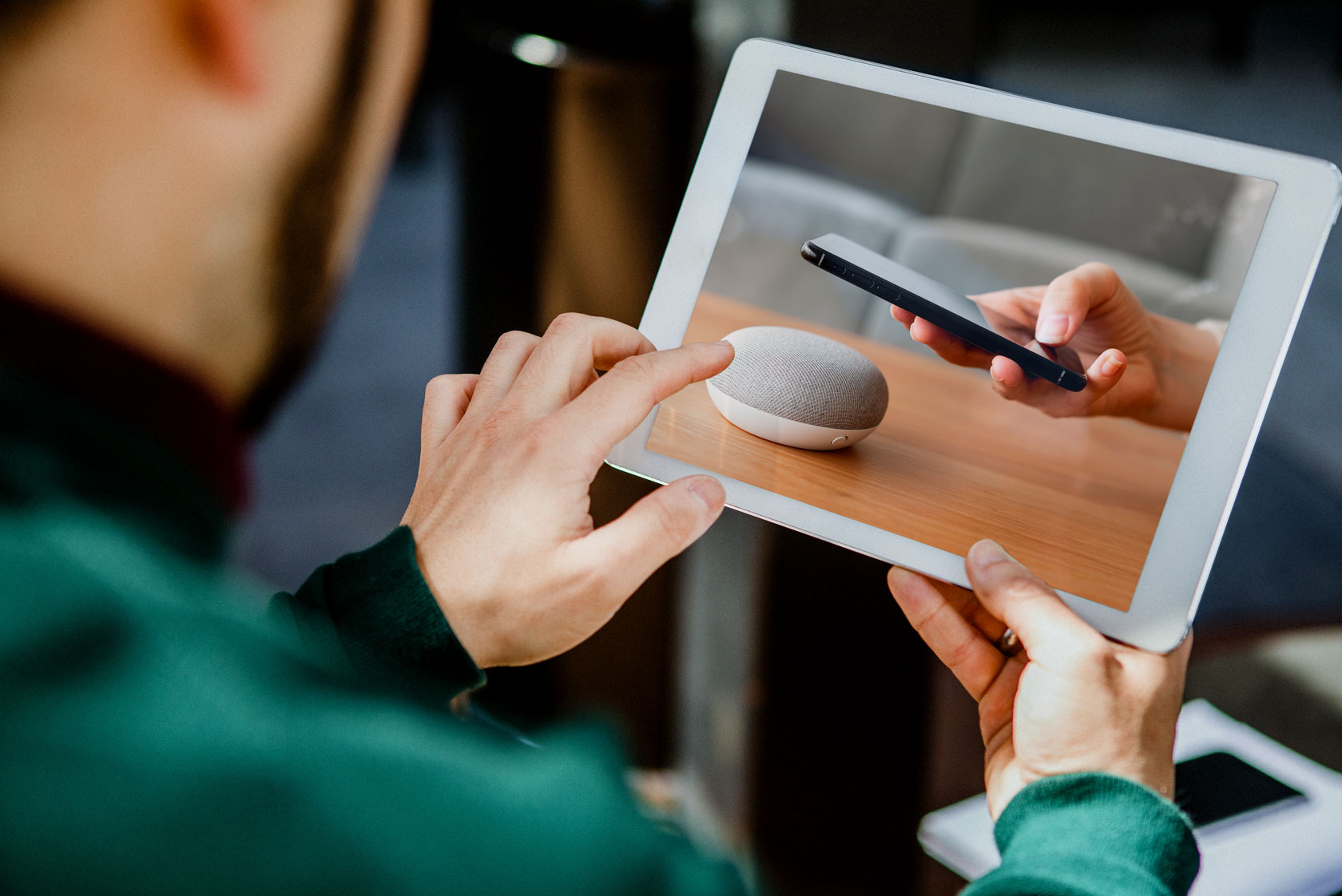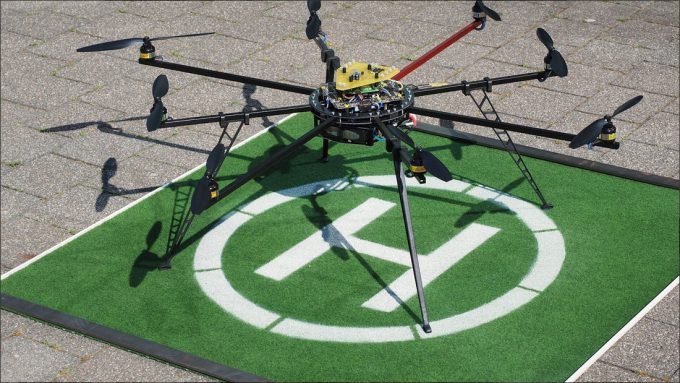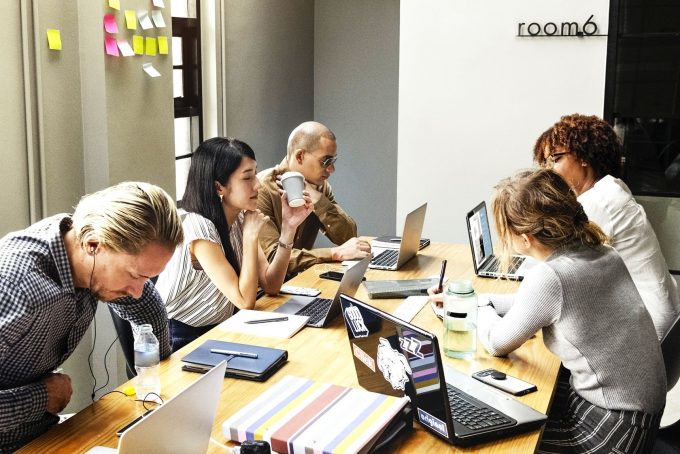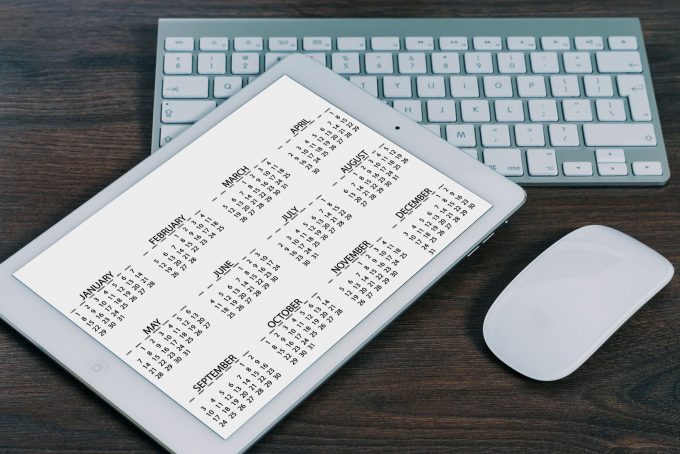
Digital Trends 2021: Collective Displacement Leads to Relocation and Rethinking of Activities
The trends expected to have an impact in 2021 are mostly influenced by the experience of the COVID-19 pandemic. In this article, we take a look at trends like Liquid Infrastructure, In-Game Experiences, Digital Parity and Subscription Sharing that might be applied to library services, to libraries as working spaces or to the context of Open Science.
by Birgit Fingerle

The COVID-19 pandemic has turned major parts of our life upside down, leading to new trends and new uses of technology. The feeling of collective displacement is a trend overshadowing all these. Due to the COVID-19 pandemic, 2020 altered, where und how we experience activities. A lot of our tasks were relocated to other places in order to still be able to fulfil them. New ways and new places to attend our duties as well as our hobbies are needed. Accordingly, organisations need to figure out new ways to shape the relationship with their patrons. In order to do so, they must be aware of how information-gathering has changed and they must also replicate or replace physical touch in a digital way. Shopping for instance has become an atomised activity, split into many micro moments spread across devices, platforms and across the day. In addition, brands have to find new ways to deliver joy to the home shopping experience.
Retail Trends as a potential Role Model for Libraries: Liquid, Virtual and by Appointment
Because of the collective displacement trend mentioned above, the place where we buy products or use services has also changed. Thus, organisations have to rethink their supply chain and their whole physical infrastructure. This trend is called Liquid Infrastructure. In order to be able to quickly react to changing conditions organisations need to develop more agility and resilience which will also make them futureproof for instance for answering challenges arising from climate change. While working on new supply chains and physical infrastructures, organisations should also consider sustainable alternatives to become more sustainable at the same time. In addition, they should explore new business models and value propositions like subscription models and personalisation.
Traditional marketplaces have been transferred to the digital world because of the pandemic too and are now taking place virtually. As ecommerce is booming, marketplaces are included in this shift, transforming everything from farmers’ to Christmas markets into virtual marketplaces. This way, consumers can at least keep a little bit of the normalcy that they have lost since the pandemic started.
Another growing trend is robot retail (see TrendHunter‘s 2021 Trend Report) as robots help to limit contacts between employees and customers. Examples are: Robots acting as bookstore assistances like the “AROUND B” Robot that carries books for browsing and purchasing, or contactless delivery robots brought to new cities like the delivery robots of Starship Technologies.
Contactless lockers are being installed in the retail world to reduce person-to-person contact and to enhance the safety of shopping. Shopping lockers (see TrendHunter‘s 2021 Trend Report) are being used as food pickups as well as for in-store returns for instance.
With respect to personal contacts, the trend “Appointment Retail” (see TrendHunter‘s 2021 Trend Report) means that shopping is offered by appointment only. This ensures safe in-person shopping experiences as it contributes to maintaining distance. Might, for instance, offering lockers and more services on appointment also be meaningful for libraries to better address patron anxiety of health risks?
Events and new touchpoints: Virtual crowds and in-game experiences
The trend of collective displacement also shines through events and exhibitions. Companies are creating technologically-integrated solutions that allow the public to take part in live events, for instance live concerts. This virtual crowd (see TrendHunter‘s 2021 Trend Report) is now made possible by using video conference technology as well as virtual reality technology. Attending a live event as part of a virtual crowd also brings viewers a degree of normalcy into their lives.
Gaming is an increasingly popular form of entertainment and consumers now expect brands to integrate seamlessly into their habits, like gaming and social media. As brands outside of gaming are looking for new possibilities to participate in these developments, more and more are marketing their products and offerings with in-game experiences (see TrendHunter‘s 2021 Trend Report). One example are In-Game Art Galleries like the one offered by the Getty Museum. This tool lets players import art in the game Animal Crossing. Furthermore, in an In-Game Museum Tour the Monterey Bay Aquarium is offering virtual tours of Animal Crossing’s museum.
Training and tools for librarians and patrons: Gamification and fostering wellbeing
Several trends have the potential to influence the tools and the training offered for library staff on the one hand and patrons on the other hand. Because of the experience of collective displacement and work from home, mental wellness becomes a new focal point when rethinking products and services. For example, Microsoft Teams will integrate new features in order to improve users’ work/life balance while working from home.
Training and onboarding employees is increasingly being accelerated through gamified technology. This trend named gamified profession (see TrendHunter‘s 2021 Trend Report) where platforms are used to enhance skills and engagement in the process of training may become more common as working from home becomes the norm and managers are trying new ways to enhance engagement and interactions among new employees. The training needed for individuals transitioning into new roles requires interactivity to learn skills and policies effectively. Thus, gamification is an interesting approach for training.
To build meaningful connections between remote employees, organisations are turning to new tools, which help them to facilitate team-building exercises and rewards. By fostering remote engagement (see TrendHunter‘s 2021 Trend Report) they contribute to reducing feelings of social isolation, which might otherwise negatively affect the collaboration. Innovative tools are needed to ensure that employees working from home feel connected and valued and this way also more encourages toward sharing ideas and working together.
Signs of Open Science: Digital parity, subscription sharing and do-it-yourself-innovation
The COVID-19 pandemic has fostered trends towards Open Science. In addition to the obvious greater attention for preprint papers there are also several other trends outside the academic systems, which are interesting in the context of Open Science.
Equal access continues to be a dream, as we still live in a world characterised by digital inequality. A WhatsApp und Facebook chatbot like Foonda Mate shows us how the inequality due to the lack of a stable internet connection can be bridged in order to give South African students access to educational materials. Thus, they were and are able to keep up with their schoolwork when schools are closed. This example is part of the trend providing online access to all, called Digital Parity.
Another interesting trend: Brands in the technology space are helping users to share subscriptions by creating platforms that enable sharing subscription passwords in a safe and controlled way. These platforms (see TrendHunter‘s 2021 Trend Report) for safe subscription sharing to digital goods range from web extensions to password-managing.
As innovation increasingly is a product of talented people acting in challenging circumstances, organisations should find ways to joint this Do-it-yourself-Innovation revolution and rethink how they approach innovation. The emphasis of organisations should switch from co-creation with the people to giving the people the tools and platforms to innovate for themselves in order to create better products and services.
Members of the generation Z (Gen Z), born between 1997 and 2012 approximately, are also increasingly aiming to develop new skills outside of the traditional school system. They do so by turning to platforms, services and spaces that help them expand their worldviews and skills without the constraints of traditional schooling. The Gen Z Creative trend (see TrendHunter‘s 2021 Trend Report) also allows them to develop skills that often are not part of the education system. This willingness to qualify outside of the traditional educational system stems from two main sources. First, exposure to political and social issues from young age on has made them critical thinkers that are more likely to explore alternative learning options. Second, their social media habits are giving Gen Z more motivation to develop skills and practice hobbies just for enjoyment and sharing.
More than downsides: New opportunities and glimmers of hope in the crisis
The pandemic has disrupted a lot of our plans and the way we live and work. Looking at the trends emerging from this crisis reveals some of the opportunities implied in this forced transformation. Among these glimmers of hope is that Open Science, especially Open Access, seems to be a winner of the crisis. Furthermore, studying current trends in retail or gaming can trigger new impulses for further change in libraries.
Further information on important trends und technologies for 2021:
- TrendHunter‘s 2021 Trend Report
- 21 Trends for 2021 von Trendwatching.com
- Fjord Trends 2021
- The 5 Biggest Technology Trends In 2021 Everyone Must Get Ready For Now
- Here are the top tech trends of 2021, according to 30+ experts
- Tech trends in 2021: Fast planes and homeworking
- Ten Technology Trends Moving into 2021
- Tech Trends 2021
- Tech Trends 2021 – These Developments will have a lasting impact on your business
- Diese sieben Entwicklungen sollten Unternehmen kennen (German)
- Die Post-Corona-Trendmap (German)
- Diese Technik-Trends kommen 2021 auf uns zu (German)
- 12 Technologie-Trends für 2021 (German)
Birgit Fingerle holds a diploma in economics and business administration and works at ZBW, among others, in the fields innovation management, open innovation, open science and currently in particular with the “Open Economics Guide”. Birgit Fingerle can also be found on Twitter.
Portrait, photographer: Northerncards©
View Comments

Open Science & Libraries 2021: 21 Tips for Conferences, Barcamps & Co.
Which conferences and events could be worth a (online) visit in 2021? We have put...



